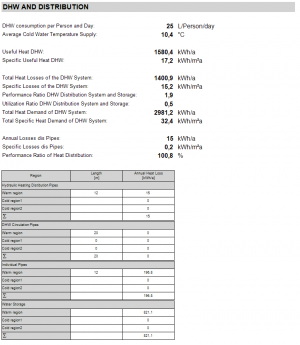Passive:Verification: Unterschied zwischen den Versionen
SebSta (Diskussion | Beiträge) |
SebSta (Diskussion | Beiträge) |
||
| Zeile 10: | Zeile 10: | ||
== Secondary Passivehouse Requirements == | == Secondary Passivehouse Requirements == | ||
[[Bild:Passive-verification_secondary.png|right|thumb]]<br style="clear:both" /> | [[Bild:Passive-verification_secondary.png|right|thumb]] | ||
The scondary requirements consist of the HRV efficiency and a percentage chance of overheating of the building. Depending on the numbers WUFI®Passive will give recommendation if a seperate cooling system is needed or not.<br style="clear:both" /> | |||
== Building Elements == | == Building Elements == | ||
[[Bild:Passive-verification_buildingelements.png|right|thumb]]<br style="clear:both" /> | [[Bild:Passive-verification_buildingelements.png|right|thumb]]<br style="clear:both" /> | ||
Version vom 27. Juni 2013, 12:59 Uhr
Results of Passive House Verification
This page shows the different subpoint of the output of the Passive House Verification. To each subpoint there will be a short description of the output parameters as well as a screenshot.
Building Information
The first section summarizes some general information about the building itself.
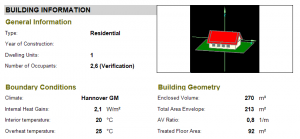
Passivehouse requirements
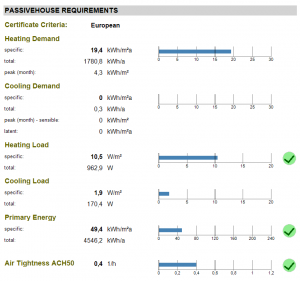
The primary passive house requirements depend mostly on needed energy, mostly in the form of cooling and heating as well as primary energy demand. All values are given in a specific value (per square meter/feet) and in total. Heating and cooling demand also provide a peak value(month).
Secondary Passivehouse Requirements

The scondary requirements consist of the HRV efficiency and a percentage chance of overheating of the building. Depending on the numbers WUFI®Passive will give recommendation if a seperate cooling system is needed or not.
Building Elements
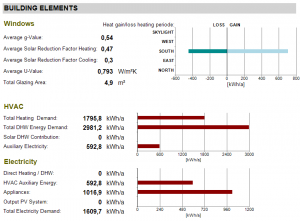
Heat Flow

Climate

Calculation Parameters
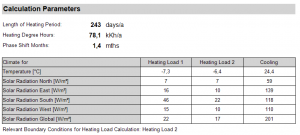
Annual Heat/Cooling Demand

Heating/Cooling Load
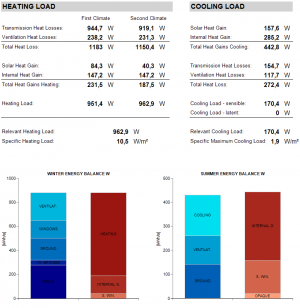
Areas
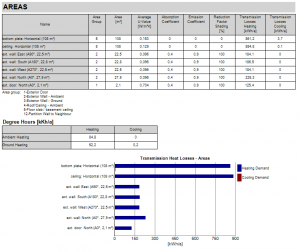
Thermal Brigdes
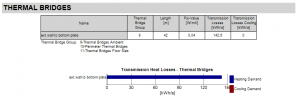
Windows
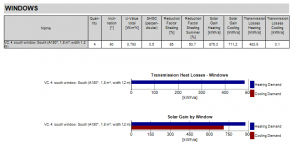
A new screenshot is needed here.
Summary Building Envelope
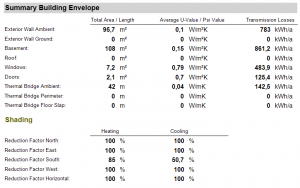
HVAC Systems
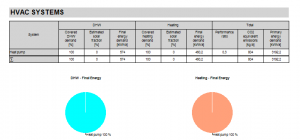
Ventilation

Electricity Demand - Auxiliary Electricity

Electricity Demand Residential Building
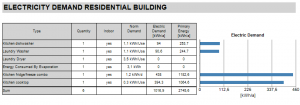
Internal Heat Gains

DHW and Distribution
